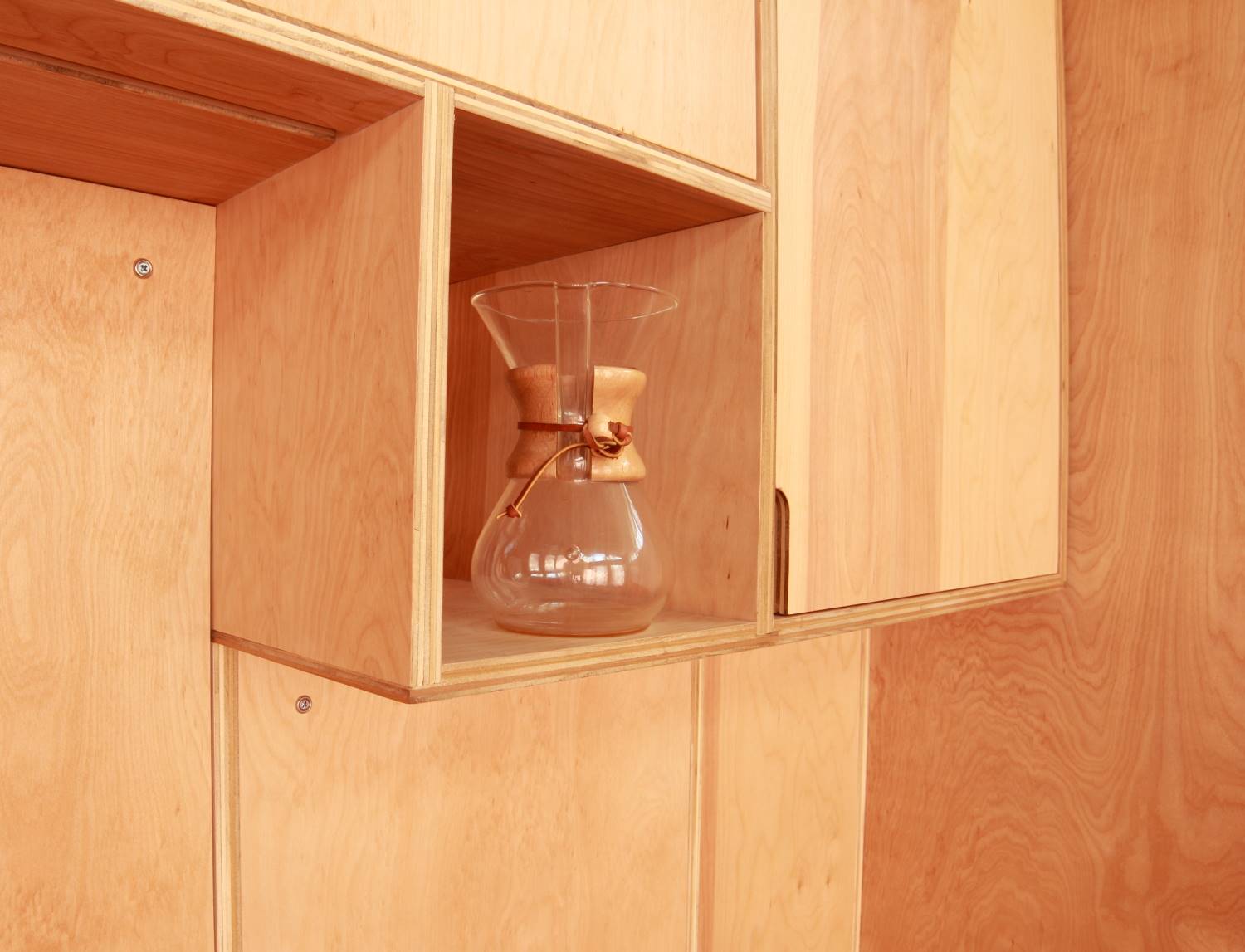Cabinets Shouldn't Be Boring
Cabinetry doesn't have a very challenging job. You can find lots of guides out there which talk about the superiority of plywood over MDF, and MDF over particle board, and particle board over... nothing, but the truth is that any of those materials is sufficient from a structural perspective unless you have thick concrete countertops. Cabinets end up, on most projects, as pretty boring, functional things that don't add much to a space besides a sense of order and organization. That's a shame because it means that you're not thinking about them, which in turn means that there's a missed opportunity. What if the design of the cabinets was an integral part of the design of a space? What if the cabinets were literally shaped by what they stored, or how they are used?
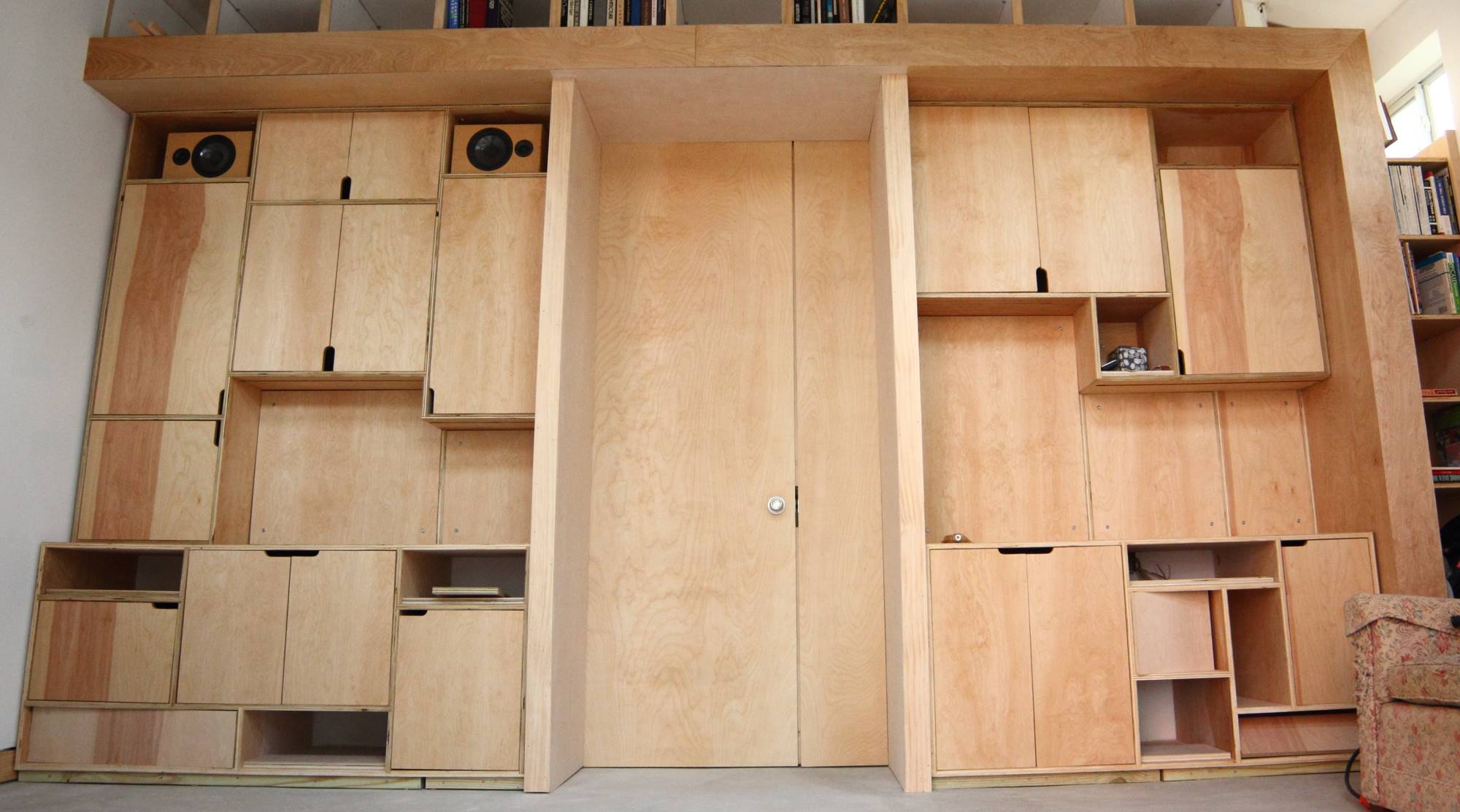
Questions We Asked
Because Work5hop builds our own work, we have to think about how it's fabricated and assembled. Part of that is an interest in aesthetics as more than just paint-deep, and part of it is because there are real impacts to productivity and our financial bottom line. That's why the Work5hop office was approached as one big prototyping experiment and why you'll see a number of one-off furnishings and projects on this site. It's hands-on research.
So the cabinetry finish-out for Work5hop's office explores several different questions. What if everything is plywood, and we don't try to hide it? How can the shape of the cabinets reflect how they're used instead of just being standard uppers and lowers? How can the cabinets become an entire wall of the space? What's the best way to fasten this stuff together?
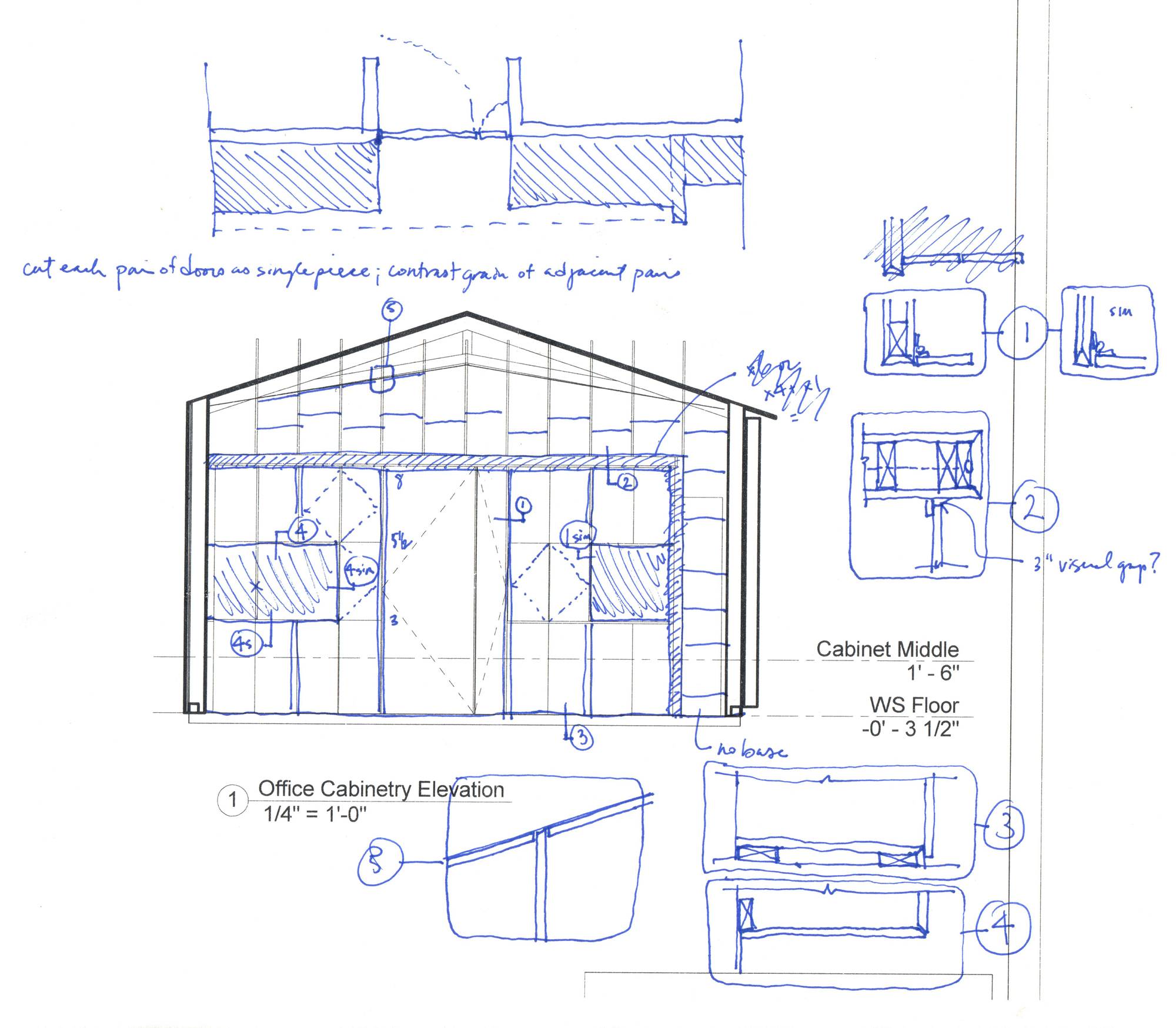
Joinery
Plywood takes glue extremely well. That seemed like the place to start for assembling the carcasses (which is the unattractive word for the cabinet bodies). A butt joint is the simplest joint, but it's not very strong. A grooved joint -- technically a dado joint; the groove is called a dado -- is better, and not that hard to achieve, so dado joints are the basis for all of the joinery.
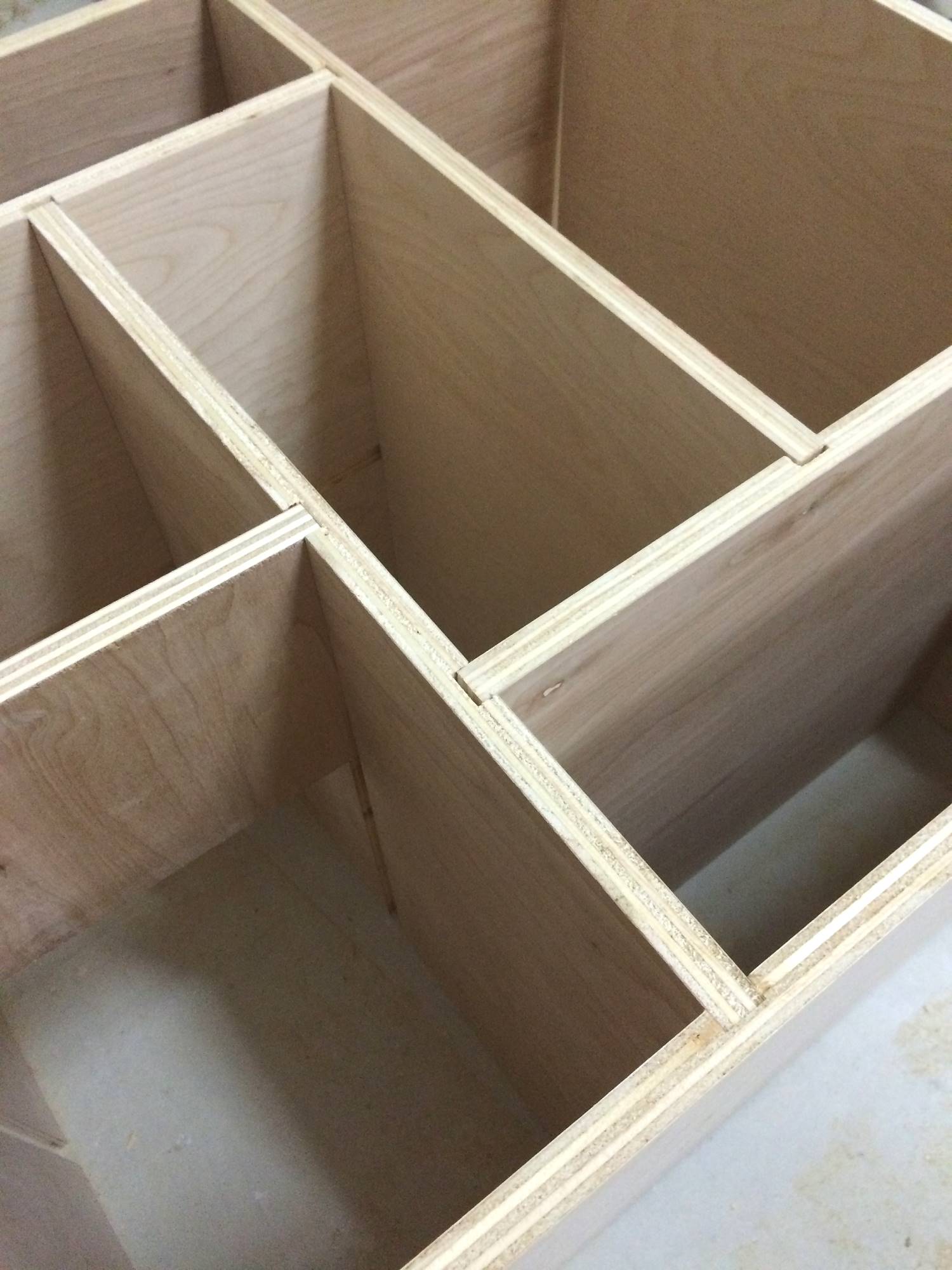
Don't Lie
The edges of plywood look striped because you can see the different layers of wood glued together to make the sheets. Those edges are usually covered with a thin veneer, but then you're pretending that plywood is something other than what it is. Well, what if we expose those edges instead of covering them up? Together with the dado joints, that's a coherent design language for the cabinet carcasses. The same strategy extends to the doors: single inset slabs, exposed edges, and handles that are cut away rather than added on, so you see the plywood instead of a shiny knob. The handholds are oriented according to the most comfortable position of your hand as you grab them. And you don't need a door everywhere, so there are strategic openings as well.
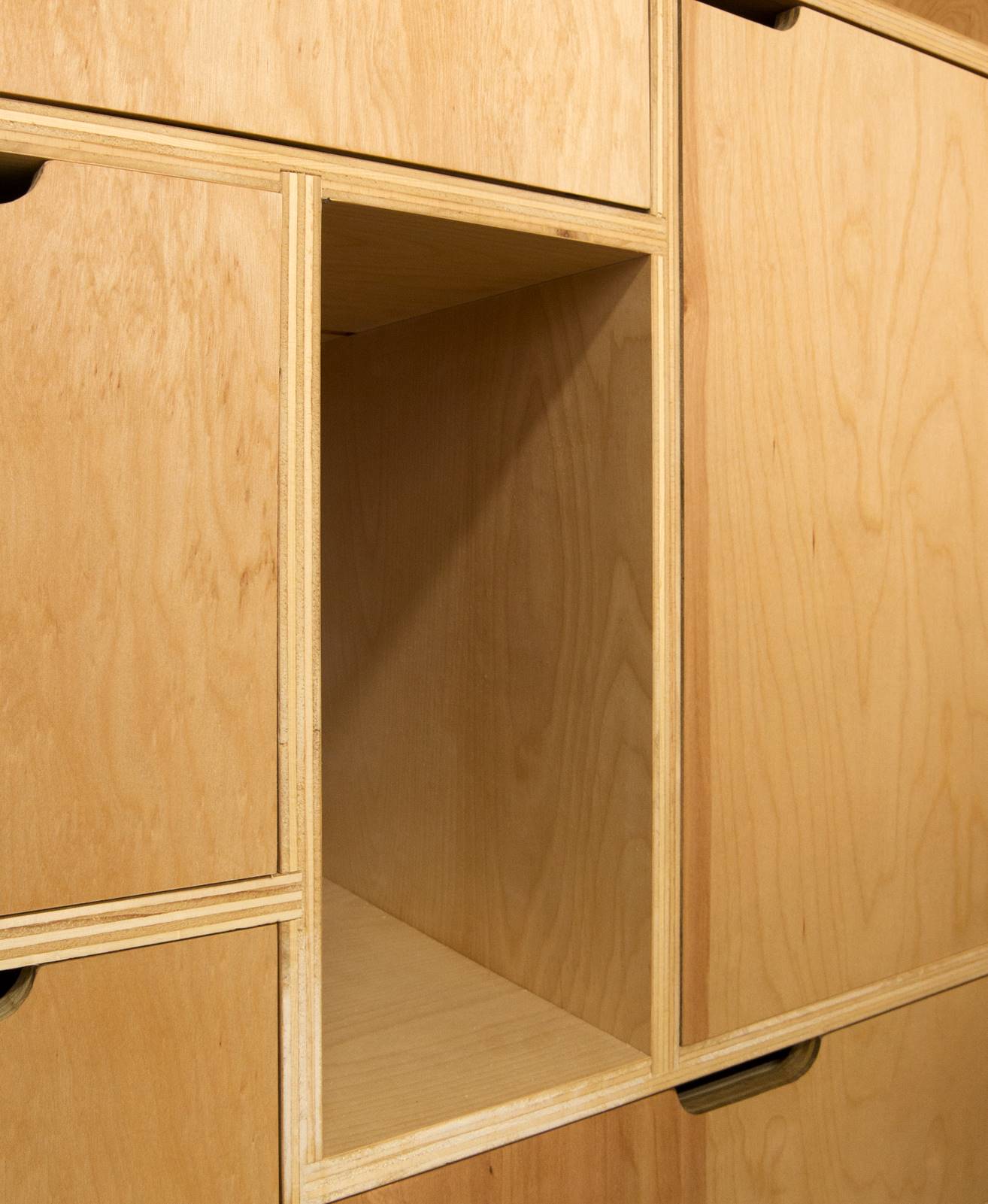
Form and Use
Form-wise, most runs of cabinets feature uniform upper and lower banks. But that doesn't make the best use of available space here, where we won't need that much counter space. So the cabinets were designed around use: larger counter spaces in the middle and where someone might stand to operate a touchscreen computer; uppers all the way down to the counter to expand storage in one spot, and uppers close to the counter elsewhere because that space above the counter isn't useful.
These cabinets are nothing if not custom. They're particular to the size, shape, and aesthetic of the space. A different space would call for a different design, but a lot of these techniques are applicable elsewhere. Let us know if we can design something special for you.
